Software Is Eating The World
– Marc Andreessen In 2011, Marc published this article in The Wall Street Journal.
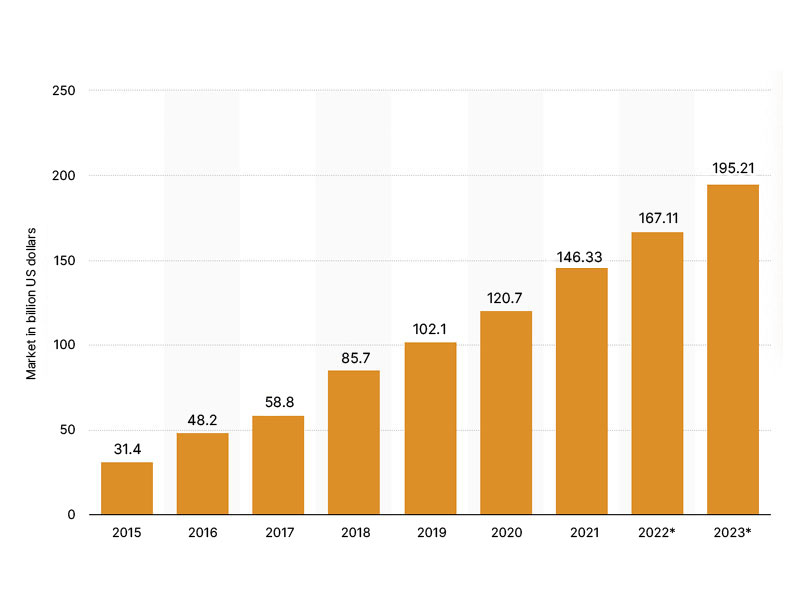
Source: statista.com
Fast forward to 2022, when it is anticipated that the SaaS sector is valued at around USD 195 billion by the end of the year; it’s safe to say that the global software market is fully submerged in software. Cloud-based SaaS applications have become increasingly popular in the contemporary business environment. And the United States is expected to experience the largest increase, from 92 billion euros to 191 billion euros in 2025.
Needless to say, the increase utility of SaaS based solutions is resulting in rapid innovation, reducing the need for traditional methods. Undoubtedly, product development is accelerating worldwide, eliminating the necessity for old approaches. In conclusion, the growth within the SaaS industry presents tremendous potential, but as an entrepreneur, you’ll need a fundamental understanding of its nuances and complexities to flourish in the SaaS business. This article covers every aspect of those topics. Keep reading to learn everything there is to know about SaaS and how to get started.
What is SaaS?
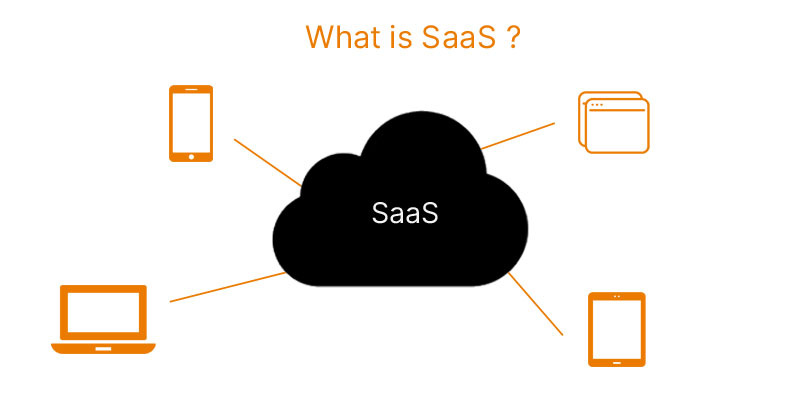
Software as a Service (SaaS) is a comparatively new way to distribute software that allows customers to access programs online without needing installation. A provider primarily maintains SaaS solutions. The provider automatically updates as well as supports the software. Consumers can use them using any online browser.
Why should you choose the SaaS model?
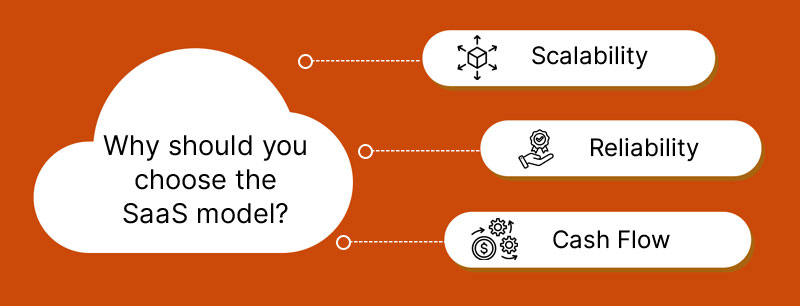
Scalability:
As the software consumption or the number of users is expanding significantly, you don’t need to be concerned about scalability. Businesses with the SaaS model are able to achieve rapid customer growth without the requirement to buying additional hardware and other operational elements. The lower cost of entry and the leveraging of the cloud infrastructure means you can get consumers for your services and become successful on the backs of fewer consumers.
Reliability:
SaaS applications rely on AWS SaaS architecture for reliability. This architecture is considered the most dependable system for operating cloud-based services. In addition, the architecture guards against overloading related shutdowns of consumer websites and services. If necessary, the service provider may move the data from the client’s server to another server to ensure that it never goes down, can scale without delay and ensures data security.
Cash Flow:
Businesses can generate recurring revenue, a steady and sustainable revenue stream, by employing a SaaS model. This gives businesses the confidence to make sufficient money to pay their bills and continue operating. A startup firm can secure funding more easily that brick and mortar alternatives. The easy and cost effectiveness of the SaaS solution business model is not lost on investors.
The 3 Top SaaS Trends in 2022
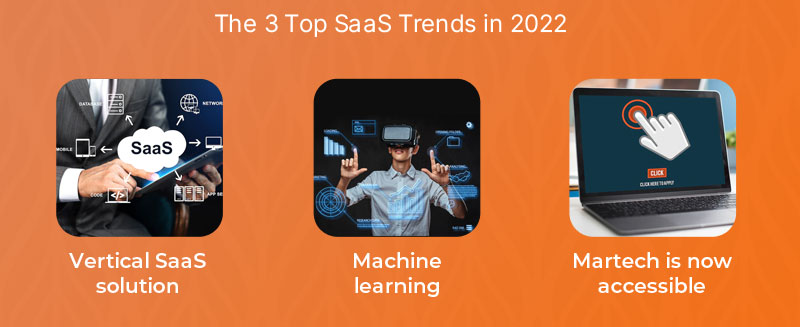
1. Vertical SaaS solution
The leading SaaS industry trend for 2022 is vertical SaaS. As a new counterpart of horizontal SaaS, vertical SaaS was proposed by IT experts. Vertical SaaS has the capacity to satisfy the particular requirements of a particular industry. Many companies have developed a strong predilection for SaaS solutions during the past ten years. They fully attend to their particular requirements. As a result, the vertical SaaS sector grew by around four times its original size.
2. Machine learning
The SaaS industry uses machine learning (ML), a branch of artificial intelligence, for automating responses in customer support and apps, including AI-powered chat interactions using live chatbots. Additionally, the SaaS onboarding procedure will be automated. As ML is based on the autonomous operational framework, future developments will make it possible to create systems and tools that enable companies to automate vast parts of internal tasks other than customer support or satisfaction.
3. Martech is now accessible.
The word “martech” (marketing technology) comprises a variety of technologies that enable more significant insights, smoother workflows, and expanded creative skills to assist brands or enterprises improve their promotional activities. Although the martech sector slowed in the pandemic because of antiquated techniques such as advanced features or functions and insufficient product demos, significant improvements are now on the way. Martech companies will concentrate on doing one particular thing exceptionally well while enabling normal users to make decisions by gaining insights or doing previously impossible activities.
6 Steps for Developing a SaaS Product
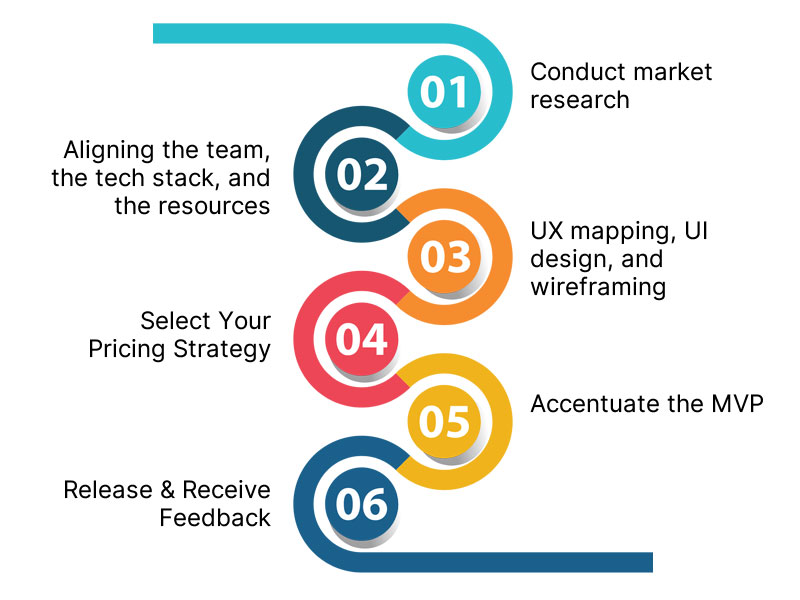
1. Conduct market research
It is the first thing you need to do to determine if it makes sense to create the SaaS product that you already have in mind. Investigate the target market you intend to enter.
Before developing your SaaS product, you must also be aware of the industry conditions. Ask pertinent questions, such as:
- Who is your ideal client?
- What causes them the most suffering?
- Who are the rival companies?
- What distinguishing qualities do they have?
- Which business strategies do they use?
You will then be able to specify the broad market needs. Once your vision has become clear, create an overview of the intended audience. To persuade consumers to select your SaaS service over competitors, it must be engaging and accessible.
2. Aligning the team, the tech stack, and the resources
After the product & market analysis is finished, the following step is to combine the group and the necessary technology to make that happen. Finding the appropriate people and technology stack to complement their talents is part of this process.
Spend time ensuring the team is in consensus on the product’s goals, including what to construct, who will use it, and standards for KPIs.
3. UX mapping, UI design, and wireframing
The initial embodiment is wireframing of the product idea. With a wireframe, additional time is gained in developing and discarding product concepts. A wireframe acts as a low-cost brainstorming tool until the team decides on the best wireframe to start the final design process. Depending on this design, a customer experience map, specific screens, and layouts will be created.
4. Select Your Pricing Strategy
The appropriate price strategy can help the SaaS product expand quickly after release. But how can you do this correctly?
Ensure your product’s price model offers value to the intended market before finalizing it. Every buyer looking to purchase a product wants the optimum cost-to-value proportion. They would prefer to spend their money on something other than something which is regularly idolized or needs to offer sufficient functionality at a reasonable price.
5. Accentuate the MVP
Undoubtedly, developing an MVP is an intelligent step in developing the SaaS product.
Although an MVP may be a partial product, it includes sufficient functionality to draw early consumers and prove the viability of a concept. The MVP can be expanded and modified after it has been released. It addresses a crucial issue for your consumers, even if it is a partial product. The MVP must captivate your target market and inspire adoration for your offering.
6. Release & Receive Feedback
Making the SaaS product accessible to the intended market is the goal of a product release. However, there is a risk of not receiving enough engagement. Therefore, branding strategies must be used before introducing the SaaS product. You must pay close attention to any consumer feedback you receive after launching the MVP. Build it and they will come is wrong, research and build to the need, survey and build to the markets input is the strength of adgile solution development.
3 SaaS Challenges Companies Face and How to Overcome Them
1. Customers need help seeing the value of the product.
Potential customers need help evaluating SaaS solutions due to the tremendous competition for customers’ attention.
They may need help understanding the real benefit of the SaaS product despite this heavy competition. Any SaaS solution should aim to increase users’ productivity and ease of use. It is simple to understand why customers need help recognizing the distinctive value you are offering if the operational gap between the one they are currently using or are aware of and your SaaS product is high.
The Solution: Establish a Granular Relationship Between Price and Value
This problem has a satisfying solution but is also complex and time-consuming. You will need to rethink your approach to marketing the product and its key benefits if you want to offer customer satisfaction. Emphasize the customer’s specific problems after being aware of them to determine which areas your product can resolve faster or more effectively than the existing solutions they are currently using.
2. Limited support and communications
When making a purchase, 64 percent of people place more weight on the customer experience than the cost. Even if they are aware of it, the harsh fact is that many organizations struggle more when providing customer service. Customer satisfaction can result in decreased retention rates if the user is provided with the assistance they expect.
The Solution: Live Chat Service
For a representative who manages generating new leads, retaining existing clients, and fulfilling their various targets, offering outstanding customer service is harder than it sounds. This is where chatbots come into play. Customers may obtain immediate assistance and responses to their problems thanks to the live service offered on the website’s landing page. Additionally, it speeds up the process for customers, giving them the impression that you offer speedy customer service.
3. Insufficient sales representative product knowledge
A loss of business may result from your sales reps’ need for an in-depth understanding of the SaaS solution. Sales representatives who are ineffective at communicating the importance of your SaaS product to consumers are lacking a fundamental understanding of the product.
The Solution: Invest in Salesperson Training
Before allowing your sales department to interact with customers, resolve this issue by giving them access to a thorough product and training.
Final Thoughts
The SaaS industry is still growing today. More individuals are becoming aware of the potential that SaaS products. Small and medium-sized businesses are beginning to understand how well SaaS suits their requirements. As a result, investing in the SaaS sector today might pay off handsomely in the future.
To help you on your path, Netsmartz is always willing to offer its 23+ years of expertise and lazer focus on fulfilling SaaS market solutions. Our offerings include full-cycle and customized software development for small projects from start-up businesses and large organizations. Technologies have a significant impact on businesses and enhance living and economic standards such as fantastic technology is SaaS. Contact our team for more information on developing your SaaS product.
With our top 1% tech talent, we provide the highest quality SaaS application development.
Hire Us Now
Summary
Kickstart Your Project With Us!
Blog
Popular Posts
CONTACT US
Let's Build Your Agile Team.
Experience Netsmartz for 40 hours - No Cost, No Obligation.
Connect With Us Today!
Please fill out the form or send us an email to
 Don't Miss Out:
Don't Miss Out: 







